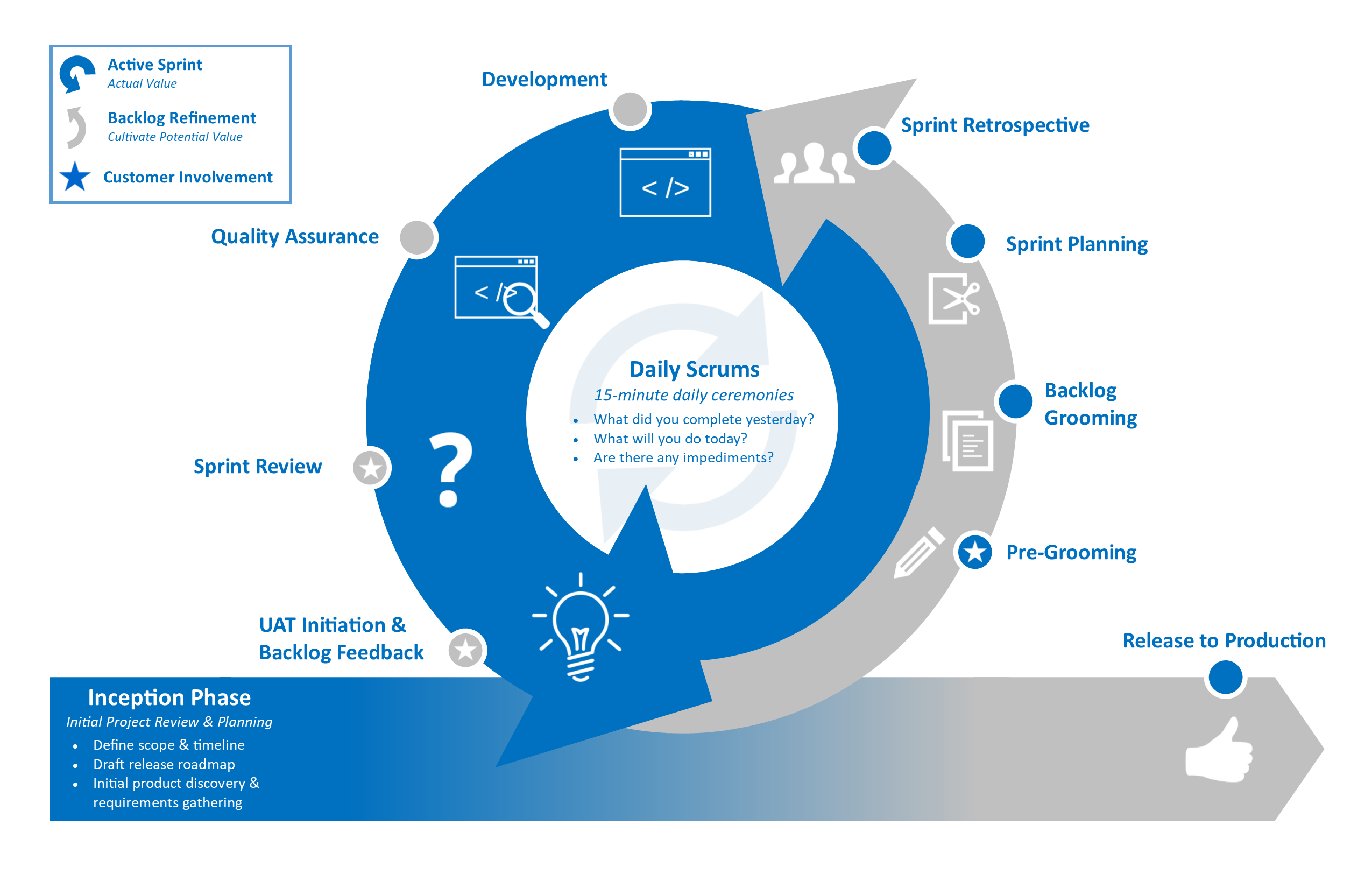The Benefits of Agile
Agile Development presents several benefits to our customers including better stakeholder engagement, lower risk, and more predictable outcomes. Among the primary benefits of agile development is giving power back to our customers: allowing them to define and prioritize requirements as the application is built. The cyclical nature of gathering requirements and developing functionality ensure a productive team capable of responding to change.
Agile @ Chainbridge Solution
For our software development projects, Chainbridge Solutions organizes development into four primary Phases: Inception, Planning, Sprint, and Release. Each Phase is comprised of several Activities:

Agile Experts at Your Service
Chainbridge Solutions approaches the intricacies of the Agile process with a flexibility that keeps the client’s needs in mind. Our approach to Agile methodologies anticipates the need for a tailored project experience depending on our client’s cadence and shifting priorities. We see obstacles as challenges rather than impediments. With our team of knowledgeable and creative experts, Chainbridge Solutions can adapt our process to meet any outcome.
Chainbridge Solutions has over a decade of experience implementing solutions in an Agile software development framework. We adhere to a framework where functionality is planned, developed, tested, approved and implemented in quick 2- to 3-week development cycles. The benefit to customers is tremendous: frequent milestones guarantee each development iteration meets their precise requirements, and the interlocking rhythms of development, testing and requirements grooming maximize productivity.




